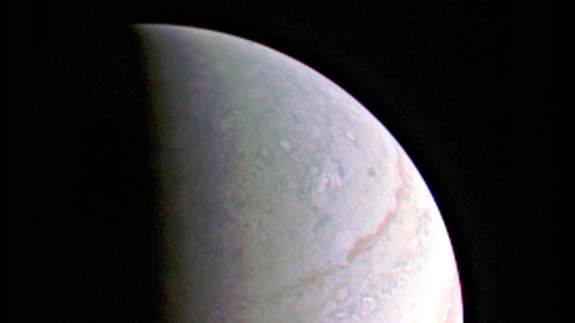NASA's Juno probe gets its first close look at Jupiter

Soaring about 2,600 miles (4,200 kilometers) above the planet's clouds, NASA's Juno space probe had its closest-ever look at Jupiter Saturday.
The pass was the first of 36 planned orbital flybys, NASA said in a statement. Soaring at 130,000 miles per hour (208,000 kilometers per hour), it was the nearest the solar-powered spacecraft will get to Jupiter during its main mission, which should end in February 2018.
SEE ALSO: Experience Juno's final approach to Jupiter through the spacecraft's own eyes
Juno launched from Florida on Aug. 5, 2011, and in July became the first probe to orbit Jupiter since NASA's Galileo mission ended in 2003.
The nerve-wracking five year journey into space, and Juno's successful attempt to enter into orbit around Jupiter, were hailed by scientists as an immense opportunity to discover more about the mysterious gas giant.
It's thought that new moons beyond the 67 we know about could be found. By mapping the planet's magnetic fields, scientists are also hoping to unearth new clues about how our solar system was formed.
About the size of a basketball court, the Juno probe had all its scientific instruments on and turned to Jupiter Saturday, attempting to gather as much data as possible. They include a vector magnetometer and plasma and energetic particle detectors.
Images captured by its color camera, JunoCam, during the trip will be released shortly, including shots of Jupiter's north and south poles.
"We are in an orbit nobody has ever been in before, and these images give us a whole new perspective on this gas-giant world," Scott Bolton, Juno principal investigator, said in the statement.
"We are getting some intriguing early data returns as we speak," he added. "It will take days for all the science data collected during the flyby to be downlinked and even more to begin to comprehend what Juno and Jupiter are trying to tell us."
After its 20-month-mission ends, Juno will be plunged into Jupiter's clouds by NASA engineers. But for now, it has plenty of work left to do.
